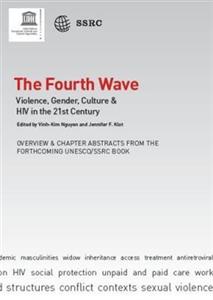
 |
CORE THEMES
|  |
 |
Special interests
|  |

|  |  |
 |
The Fourth Wave: Violence, Gender, Culture & HIV in the 21st Century
Under the banner of World AIDS Day on the 1 December, the Division for Gender Equality provides a sneak-preview of the soon to be released publication "The Fourth Wave".
 Watch the video of one of the co-editors, Professor Vinh-Kim NGUYEN, during an open discussion. Watch the video of one of the co-editors, Professor Vinh-Kim NGUYEN, during an open discussion.
|
 In the third decade of the HIV pandemic, women and particularly young women and girls have become a growing proportion of those affected and infected: In the third decade of the HIV pandemic, women and particularly young women and girls have become a growing proportion of those affected and infected:- nearly half of the 40.3 million people living with HIV are women between the ages of 15-49;
- gender disparities in HIV prevalence are more extreme among young women between the ages of 15-24; and
- globally 1.6 times more likely to be living with HIV and AIDS than young men;
- in sub-Saharan Africa overall, young women between 15 and 24 years old are at least three times more likely to be HIV-positive than young men.
Until recently, the epidemiology of the pandemic has been explained largely in biomedical and behavioural terms. More attention is now being given to the social, political and economic factors that shape individual behaviour and the effectiveness of responses. But without understanding the deeply rooted social and cultural norms which increase risks for girls, young women and other at-risk populations, the impact of HIV prevention will continue to diminish as the pandemic unfolds over generations.
To respond to these gaps in awareness, understanding and response, UNESCO’s Division for Gender Equality of the Bureau of Strategic Planning, in collaboration with the Division for Cultural Policies and Intercultural Dialogue, commissioned the SSRC to co-publish an edited volume entitled “The Fourth Wave: Violence, Gender, Culture & HIV in the 21st Century.” The volume brings together research by nearly 30 accomplished authors, senior policy makers and young scholars that offer original insights and empirical analyses of socio-cultural factors shaping the gendered course of the pandemic and responses to it. The goal of the volume is not only to assess the impacts of programmes, but to develop tools to further improve programme performance by analysing programmes from a gender equality perspective and within their broader socio-cultural context.
The ‘Fourth Wave’ summary publication provides abstracts of the chapters contained in the forthcoming UNESCO/SSRC volume, which will be launched in the coming months.
As part of UNESCO’s contribution to the XVII International AIDS Conference in Mexico, the Division for Gender Equality contributed a poster highlighting its up-coming volume “The Fourth Wave.” For more information on the Conference and to see the poster, please follow this link
Related Links:
The Fourth Wave brochure (pdf)
Resource Pack on Gender and HIV/AIDS
Open discussion with Professor Vinh-Kim Nguyen (the video of this event is also available)
|
|
|
|
Source |
UNESCO
|
|
Author(s) |
UNESCO’s Division for Gender Equality of the Bureau of Strategic Planning, the Division for Cultural Policies and Intercultural Dialogue, and the SSRC
|
|
|
|
|
|
|
|
Keywords |
HIV, Aids, Violence, Women
|
|

|
|

